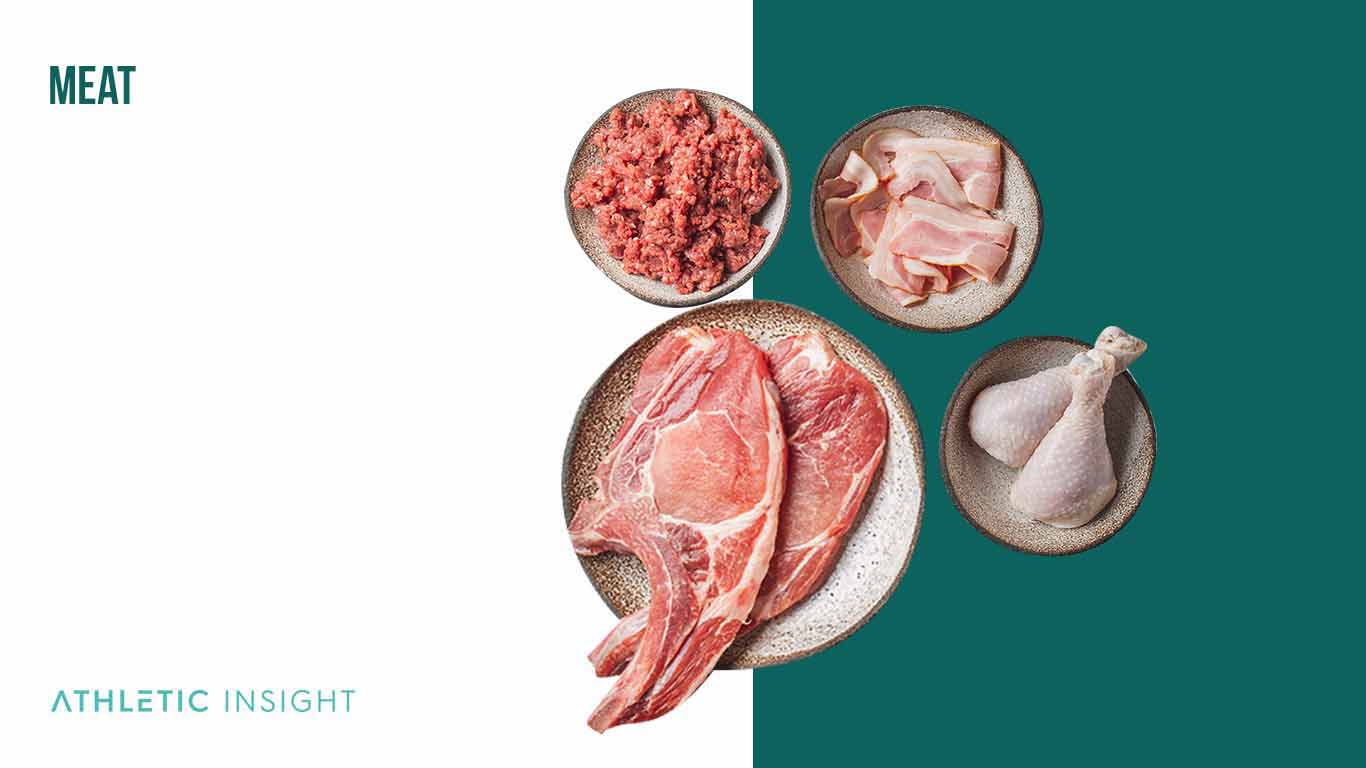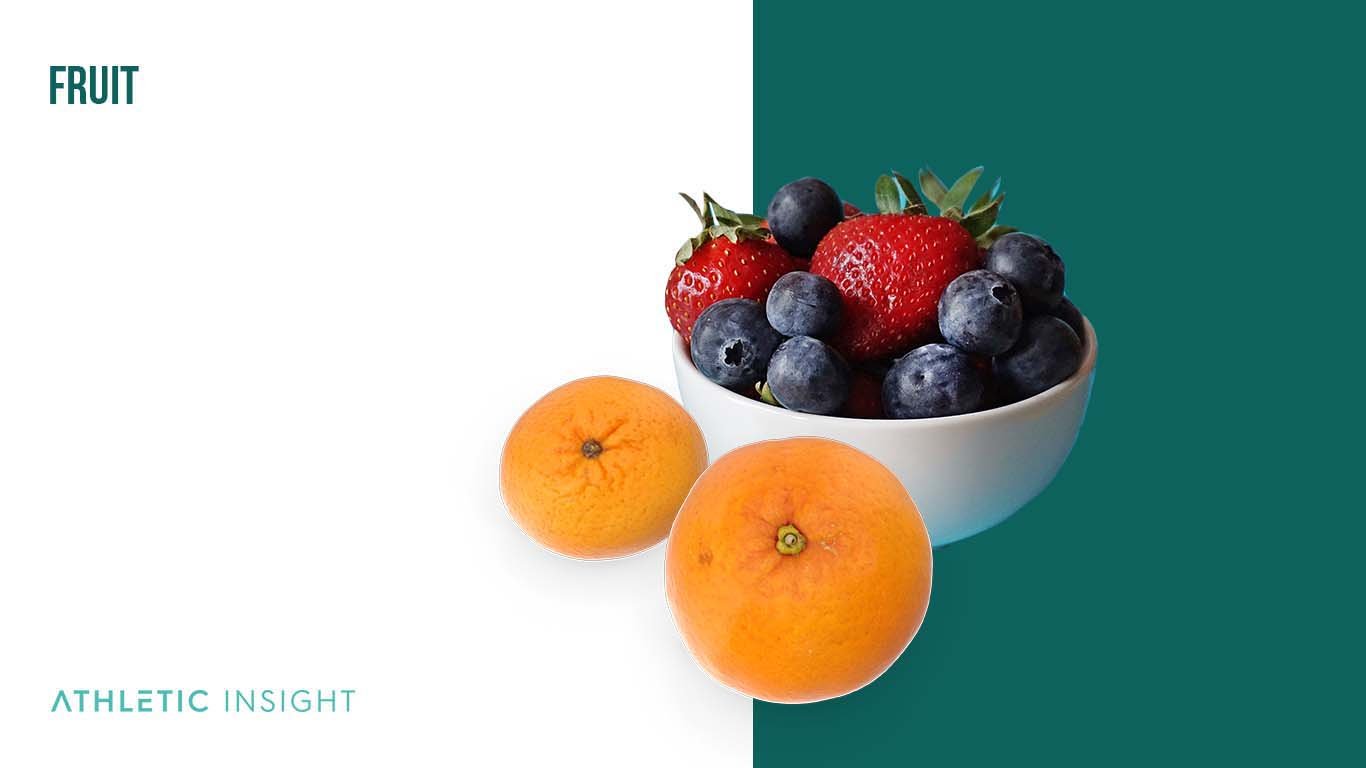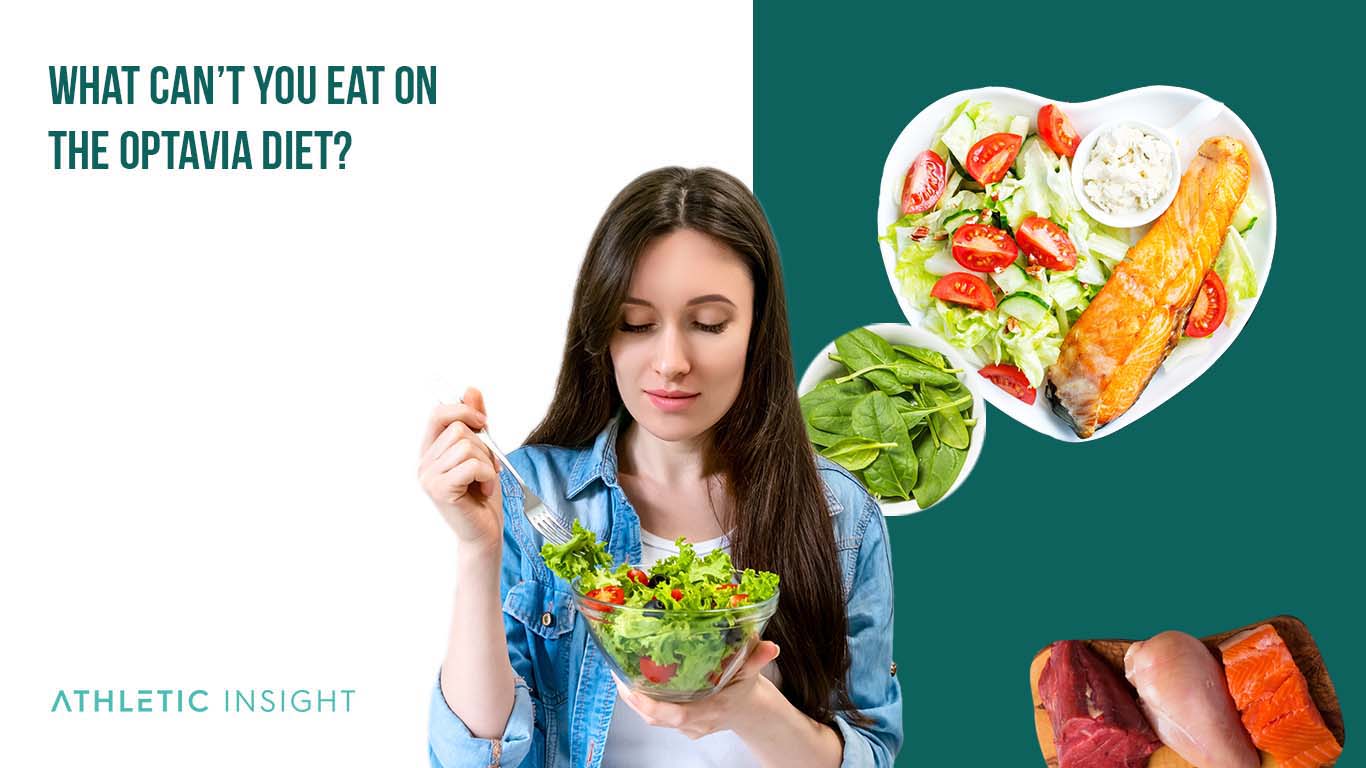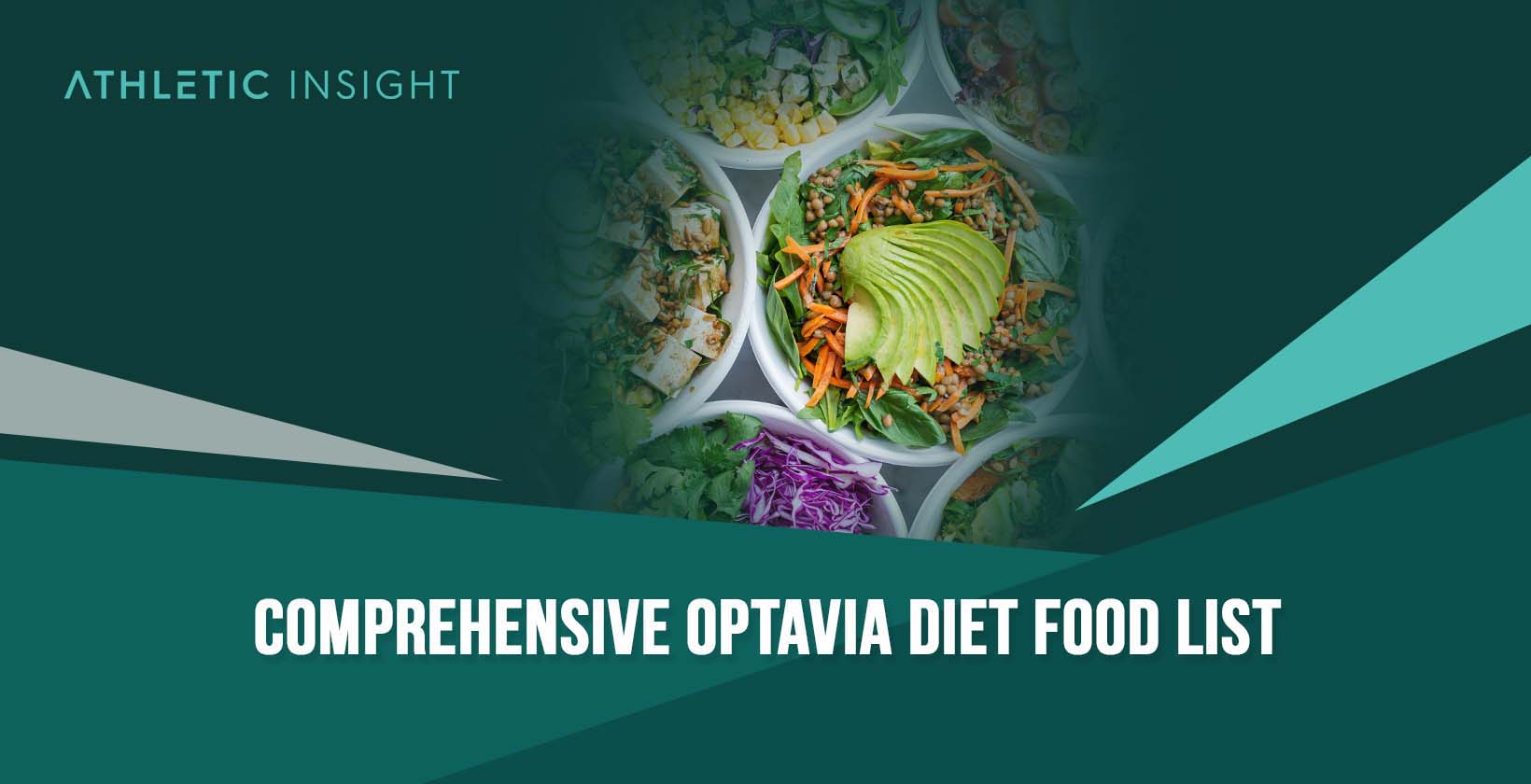If you are looking into trying the Optavia diet but aren’t sure where to start for your daily lean and green meals, then take a look at this list. This comprehensive Optavia food list will break down all the different categories of food that the Optavia diet will let you prepare, what types are allowed, and the health benefits and serving sizes it recommends.
1. Meat
Optavia allows you to prepare chicken, lean beef, turkey, lamb, pork chops, game meats, and ground beef at least 85% lean during your lean and green meals.

As you may have noticed, Optavia emphasizes lean meats but does allow some red meats as well. Optavia allows 5-7 ounces of cooked lean protein during a lean and green meal.
Depending on the Optavia plan you are on, you may be eating multiple lean and green meals every day, or if you are on the 5 and 1 plan, you will only see those 5-7 ounces of protein once a day.
The influx of lean protein helps stabilize blood sugar levels by combining them with healthy fats and non-starchy vegetables.
2. Fish and Shellfish
When on Optavia, you can eat halibut, trout, salmon, tuna, lobster, crab, shrimp, and scallops. When consuming fish or shellfish, you can consume 5-7 ounces of meat during one of your daily lean and green meals.
Fish and shellfish are filled with vitamin D and B2 and omega-3 fatty acids. Fish is a high-quality protein that can improve your metabolism, skin quality, sleep quality, and concentration.
If you are suffering from inflammation, a diet with moderate to high levels of fish can alleviate that inflammation.
3. Eggs
The Optavia food list allows eggs during your lean and green meal. You are allowed to eat whole eggs, egg beaters, and egg whites.
Each egg contains 5-6 grams of protein, and during your daily meal, you are allowed to consume 5-7 ounces of total meat.
Eggs are excellent sources of vitamin A, zinc, calcium, phosphorus, and selenium. The lean protein in eggs can help with weight loss and increase muscle mass. Eggs can also lower blood pressure and contribute to positive bone health.
4. Soy products
You can eat soy products while on the Optavia diet plan; however, they only allow you to eat Tofu during your Optavia diet period.
Tofu is a highly nutritious food, and you can eat up to 3 servings per day on the Optavia food plan. Tofu has antioxidant properties that help address inflammation and improve the body’s immune system.
Tofu is also a complete protein, meaning that it has a balanced amino acid profile and is an excellent source of dietary fiber.
5. Vegetable oils
Optavia allows people on a diet to use only certain vegetable oils. The vegetable oils allowed on Optavia are canola, walnut, flaxseed, and olive oil.
These kinds of vegetable oils have been shown to reduce cholesterol levels, improving heart health outcomes. These vegetable oils are low in saturated fat, which can help improve energy levels throughout the day.
Flaxseed oil is high in omega-3 fatty acid, which helps improve brain function and reduce the risk of hypertension.
6. Additional healthy fats
The Optavia diet focuses on consuming healthy fats that are minimally processed. People on this diet are allowed to eat olives, reduced-fat margarine, almonds, avocado, pistachios, walnuts, and low-carb salad dressings.
These healthy fats are good sources of fiber, vitamins, and minerals as well. When you find foods that have healthy fats, they are harder to absorb and gain weight. They also help suppress hunger which helps people lose weight since they push the plate away sooner.
7. Low-carb vegetables
Certain low-carb vegetables are acceptable in your lean and green daily meals. These vegetables include spinach, celery, cucumbers, mushrooms, collard greens, cabbage, eggplant, zucchini, peppers, broccoli, and cauliflower.
These vegetables have high fiber content and are low in carbohydrates, which will fill you up quicker and reduce the amount of food you feel like you need to eat.
Vegetables like these are great for heart health and contain compounds that help protect against certain types of cancers.
When comparing Optavia to other diets, the Keto vs. Optavia discussion usually involves low-carb vegetables. Since they are a great source of Keto production, many people ask, is Optavia keto then?
The difference between Optavia and keto is that producing ketones is not the goal of the Optavia diet, only reducing calories. Optavia still allows some carbs and sugars to persist during the maintenance period and beyond.
8. Sugar-free snacks
When on the Optavia diet, you are allowed to eat any sugar-free snacks, including gum, mints, popsicles, and gelatin.
Since these snacks don’t contain any sugar, they will not have a negative effect on weight loss efforts in your diet. Reducing the amount of sugar in your snacks will also improve mental health and stress levels and reduce the number of headaches.
These snacks are okay during the day during Optavia fuel sessions or after lean and green meals. You can only have a certain amount of servings of each. For example, you can only have up to 3 pieces of gum or mints per day.
9. Sugar-free beverages
Beverages that are sugar-free, like water, tea, coffee, and unsweetened almond milk, are permissible as Optavia snacks under the optima diet plan.
When someone switches to sugar-free drinks, studies show that they can reduce their body weight by two pounds and reduce total body fat by about half a percent.
Eliminating high amounts of sugar from your diet will decrease your insulin sensitivity and reduce your diabetes risk.
Optavia allows you to have as many servings of these types of beverages as you want throughout the day.
10. Condiments and seasonings
There is an extensive list of allowed condiments and seasonings. Some popular ones that people like to eat on the Optavia food plan are spices, salt, lime juice, dried herbs, salsa, soy sauce, yellow mustard, barbecue sauce, ketchup, and cocktail sauce.
Some of these seasonings require a limited serving size per day. For example, people are only allowed to have a ½ teaspoon of ketchup per day because of the sugar content.
These allowed condiments have high antioxidants that help slow down damage to your body cells from daily life and bad diets. They also allow you to create custom flavors that make food more appealing.
If you are more attracted to your food, you are more likely to stick with your diet.
11. Fruit
After reaching your desired weight loss goal, you can add more foods to your Optavia diet. Many kinds of fresh fruit like berries are allowed on the Optavia food plan at this point.

The allowed fruits will be lower in carbs, higher in fiber, and lower on the Glycemic Index (GI). It is essential to only consume low GI fruits because even though they have sugar, the type of sugar doesn’t cause your blood sugar levels to go out of control quickly.
The danger with certain types of sugar in foods is that they can cause your blood sugar levels to spike, leading to diabetes complications and other health risks. Optavita allows 1-2 snack servings of fruit per day.
12. Low fat or fat-free dairy
Once you have reached an equilibrium of weight loss, you will get the maintenance phase of Octavia, which opens the door to more varieties of food. Now you will be able to incorporate yogurt, cheese, and milk into your diet.
Optavia recommends only including these foods sparingly during your lean and green meals. While dairy products aren’t necessary to have a healthy diet, they have nutrients that help build and maintain strong bones.
They can also help prevent putting the weight back on by lowering the risks associated with belly fat and improving overall health outcomes.
You can have 1-2 servings of snacks per day, with dairy being one of the options.
13. Whole grains
During the maintenance phase of Optavia, whole grain foods are allowed back into the diet. A few whole grain options are high fiber breakfast cereal, whole wheat pasta, whole grain bread, and brown rice.
You have to take care to limit the number of servings per day and choose whole grains high in fiber content relative to their calorie content.
Whole grains contain many wonderful nutrients that can reduce the risk of diabetes, obesity, heart disease, and cancer.
If weight loss is your goal, you will want to make sure you keep an eye on your whole grain intake because the number of carbohydrates they contain will stop you from feeling full quickly.
If your meals take longer to make you feel full, you will inadvertently start to put pounds back on again. Optavia allows 1-2 servings per day.
14. Legumes
If you have reached the maintenance phase of Optavia, you are rewarded with access to a few legumes. Some of the legumes include lentils, soybeans, beans, and peas.
Remember, during the maintenance phase, you are still restricted to 1,550 calories a day, so you will want to limit the amount of higher-calorie foods like legumes.
Once you make it out of the six-week transition period, your calorie intake will increase, allowing more legume consumption. Legumes are great once you can incorporate them into your diet. They can help lower blood sugar, heart rate, and blood pressure and reduce your heart disease and diabetes risk.
These benefits only happen if you incorporate them into a healthy diet in moderation. You can have 1 to 2 servings a day as a snack.
15. Starchy vegetables
Again, during the maintenance phase, starchy vegetables are another type of food allowed into the Optavia diet. Some starchy vegetables that are permitted are corn, peas, white potatoes, and sweet potatoes.
These vegetables are not covered under your lean and green meals though you can have 1-2 servings as a healthy snack every day.
Starchy vegetables are higher in calories than non-starchy vegetables and have less fiber, so it makes sense that their servings are restricted.
Starchy vegetables are high in antioxidants, minerals, and vitamins, so they are overall nutritious; it’s just that nutrition comes at a higher negative cost.
What Can’t You Eat on the Optavia Diet?
Since Optavia is a restrictive diet plan, there will be many foods that are not allowed under it. A few restricted food categories are listed below, including fried foods, refined grains, certain fats, whole-fat dairy, alcohol, and sugar-sweetened beverages.

These types of food are generally not okay to eat on the Optavia diet, even when you have transitioned through the maintenance phase and loosened some of the food restrictions.
- Fried foods
- Refined grains
- Certain fats
- Whole fat dairy
- Alcohol
- Sugar-sweetened beverages
1. Fried foods
Fried foods, including fried meats, fish, vegetables, shellfish, and sweets, are restricted at all points of the Optavia diet.
Fried foods are associated with a higher risk of developing health problems because they contain unhealthy fats like saturated fat and transfat. These fats can cause plaque buildup in your arteries, leading to heart attacks and stroke.
They can also raise your blood pressure and increase your high blood pressure and cholesterol, leading to weight gain and obesity.
2. Refined grains
Refined grains are a big red flag on Optavia weight loss programs. Restricted refined grains include biscuits, pancakes, crackers, cookies, cakes, pastries, white bread, pasta, and flour tortillas.
These food items are associated with adverse health outcomes if part of your diet over an extended period of time. People who regularly eat refined grains have an increased risk of cardiovascular disease, obesity, and type 2 diabetes.
3. Certain fats
Certain fats like butter, solid shortening, and coconut oil are also restricted on the Optavia food diet.
Optavia focuses on lower calorie count over smart fat consumption, unlike some other diets. While some types of fats are suitable, they are not the focus of Optavia.
Fats like butter can also increase cholesterol, which increases your risk of heart disease.
4. Whole fat dairy
Any dairy that is whole fat like milk, cheese, and yogurt is not allowed under Optavia.
The Optavia food plan restricts needless whole-fat foods that don’t serve enough nutritional benefits.
Like many other high-fat foods, whole-fat dairy foods are linked to heart disease, type 2 diabetes, and even Alzheimers disease.
Certain types of cancer like breast, prostate, and ovarian cancers are also linked to high saturated fat dairy products.
5. Alcohol
All types of alcohol are restricted on the Optavia diet. Alcohol increases your calorie and carbohydrate intake, which will work against your body’s ability to lose weight.
Alcohol also can cause health problems and doesn’t provide enough nutrition to justify being included in a diet meant to improve your health.
6. Sugar-sweetened beverages
Sugar-sweetened beverages like soda, sports drinks, energy drinks, sweet tea, and fruit juice are also restricted on the Optavia diet plan.
The drinks have such a high amount of sugar that they can hinder your weight loss goals and reverse the progress that you have made in your Optavia diet journey.
These beverages also have proven health risks, including obesity, heart disease, kidney damage, and increased risk of certain kinds of cancer.
How to Create an Optavia Diet Plan
Now that you know which foods you can and cannot eat, you are ready to tackle creating an Optavia diet plan.
Below are a few common questions people ask when starting the Optavia plan diet. These will give a sense of how an Optavia food plan will go and the benefits, costs, and recommendations that will get you started.
How many calories can you eat while on an Optavia diet?
The Optavia diet is a low-calorie reduced carb plan, so you will gradually expand the number of calories per day until you reach around 1500 calories. The goal of Optavia is weight loss through healthy food, so it makes sense that the number of calories is restricted.
How many percent of daily fat intake do you need doing the Optavia diet?
You will get less than 30% of your daily calories from fat while on the Optavia diet.
How many percent of daily protein do you need doing the Optavia diet?
When undergoing the popular 5 and 1 plan from Optavia, you will need 72 grams of protein which is about 12 grams more than the percent of daily recommended proteins.
Is Optavia diet food list expensive?
Yes, the food on the Optavia diet list is expensive. You will be spending between $400-450 per month on the fuel snacks on most plans and the additional cost of grocery bills for your daily lean and green meals.
This diet is not a budget diet; many branded diets like Optavia require a solid investment in time and money to start.
Members of Optavia that buy the fuel meals in bulk do receive discounts, and Optavia offers lean and green meal substitutes so you can skip out of the grocery store. Also, if you prefer not to do any cooking, they provide substitute meals that require minimal preparation to be eaten.
What is the sample Optavia menu for one week?
In a sample menu for Optavia, you will be eating 5600 to 7000 calories per week. This math breaks down to roughly 800- 100 calories per day. Once you move onto the more advanced plans like 5 and 2 a 1 or the 3 and 3 plans, you will have a higher calorie limit which goes up to 1500 calories a day or 1800 calories a day.
Under Optavia, you don’t have a typical breakfast, lunch, and dinner schedule. Instead, you will have a certain number of fuelings every day, consisting of Optavia sent snack products and a certain number of lean and green meals that you will have to cook from the approved list of foods.
The number of fuelings and lean and green meals allowed every day would depend on which plan you are subscribed to.
Where to find the diet recipe?
You can find Optavia diet recipes on Optavia’s social media pages and in news articles. Specific sites are dedicated to lean and green meal recipes that update regularly.
The pro of using diet recipes is that someone else has already tested and approved the recipe for you, so you don’t have to worry if it doesn’t cut.
The negative of using these diet recipes is that you may not be able to find the ingredients you need, and you might not like the extra preparation time they require.
When preparing recipes, you will want to use low GI foods like green vegetables and carrots and avoid high GI foods like white rice, potatoes, and white bread.
What snacks can you eat while on the Optavia diet?
There are many approved snacks that you can eat while on the Optavia diet. Many people consider the Optavia fuelings snacks, but there are also Optavia-approved snacks that people can eat.
While on Optavia, you can eat 1-2 servings of certain foods every day for a snack. These snacks include sugar-free snacks, fruit, fat-free dairy, low-fat yogurt, whole grains, legumes, and starchy vegetables.
You can also eat things like celery stalks, gelatin, dill pickles spears, and pieces of gum or mints.
Do doctors recommend the Diet?
No, in general, doctors do not recommend the Optavia diet. Some doctors will recommend it, and every person should have an individual recommendation based on their needs.
However, doctors do not recommend the Optavia diet because restrictive diets like Optavia create a yo-yo effect that causes people to fluctuate their weight constantly. Low-calorie diets like Optavia can trigger eating disorders in people, and eating disorders are one of the most commonly treated mental conditions in psychiatry besides depression.
As many as 2% of the U.S population has developed some form of anorexia. Any diet that could contribute to eating disorders will be tough to get a recommendation from a doctor generally.



